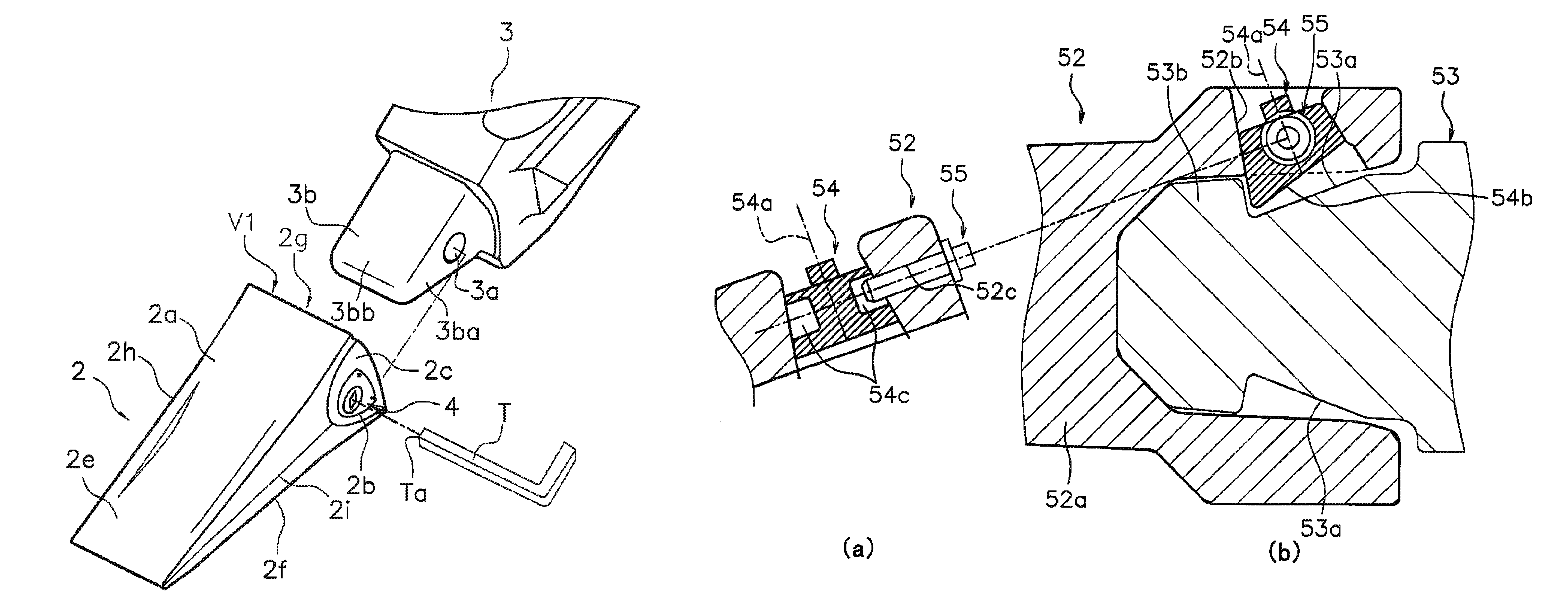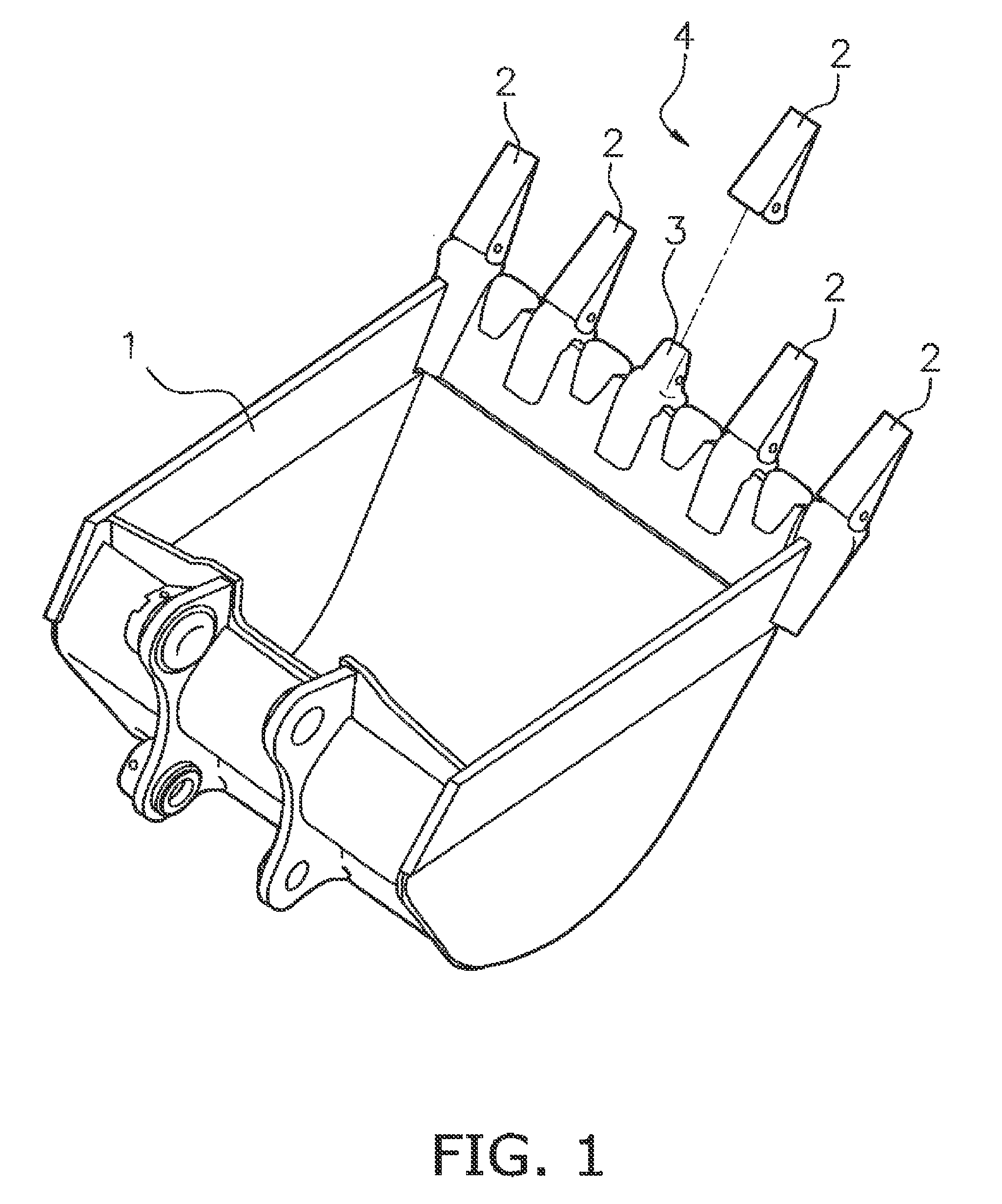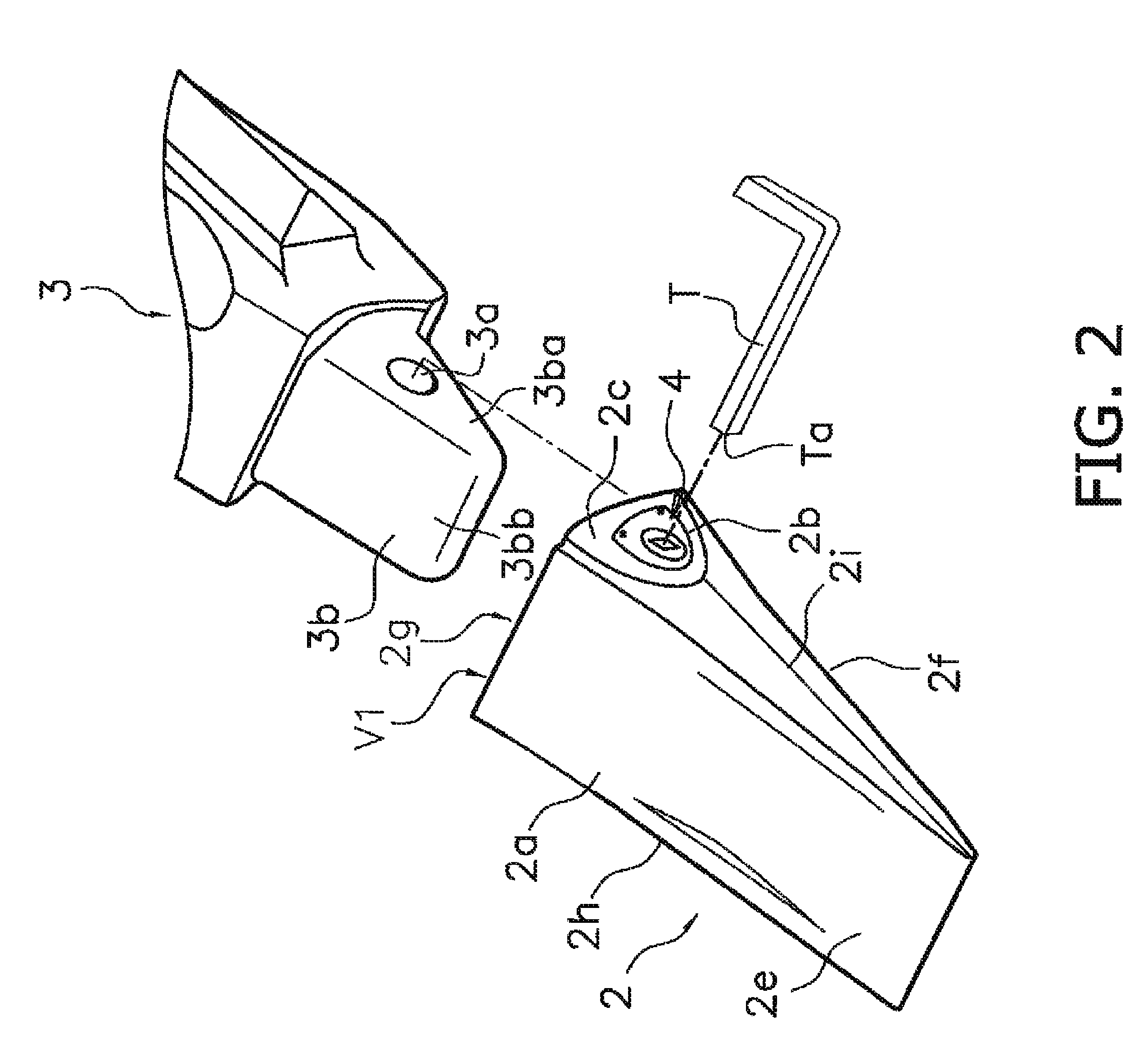Bucket tooth for construction vehicle
a construction vehicle and bucket technology, applied in the field of buckets, can solve the problems of affecting the narrowness of the tooth replacement work, and the wear of the bucket much faster than other parts, so as to improve the reliability of the bucket attachment structure, facilitate the machine through-hole, and facilitate the tooth replacement
- Summary
- Abstract
- Description
- Claims
- Application Information
AI Technical Summary
Benefits of technology
Problems solved by technology
Method used
Image
Examples
first embodiment
[0023]A tooth 2 pertaining to an embodiment of the present invention will be described through reference to FIGS. 1 to 4b, while also referring to the attachment structure to a bucket 1.
[0024]As shown in FIG. 1, the teeth 2 of a bucket 1 pertaining to this embodiment are attached to a plurality of adapters 3 provided to the distal end (the upper-right end in FIG. 1) of the lower face (the excavation side) of the bucket 1. These teeth 2 are replaced when they are worn down by work.
[0025]In this embodiment, a bucket tooth assembly corresponds to a tooth 2, and is an assembled part in which a latching member 4 is mounted to a main body part 2a (discussed below), and can be attached directly to an adapter 3 of the bucket 1.
Teeth 2
[0026]As shown in FIG. 2, the tooth 2 is a prong-like member attached to the distal end of the excavation portion of the bucket 1 in order to perform excavation with the bucket 1, and has a wedge-like outer shape that tapers toward the distal end. As shown in F...
second embodiment
[0056]The teeth on a construction vehicle pertaining to another embodiment of the present invention will now be described through reference to FIGS. 5a and 5b.
[0057]In this embodiment, a bolt 55 (anti-rotation member) that stops rotation of a latching member 54. Which rotates around a rotational axis 54a and in the outer peripheral face of which is formed a groove 54e, is used as shown in FIGS. 5a and 5b instead of using the C-ring 5 of the above embodiment as an anti-rotation member that stops rotation of the latching member 4. This embodiment differs from the first embodiment above in that whereas in the first embodiment the opening of the through-hole had an opening bottom face, and a cross section of this opening was substantially shaped like a right triangle, in this embodiment the opening does not have a bottom face.
[0058]FIG. 5b is a detail cross section of the area around the latching member, in a plane that includes the width direction and the longitudinal direction of the...
PUM
 Login to View More
Login to View More Abstract
Description
Claims
Application Information
 Login to View More
Login to View More - R&D
- Intellectual Property
- Life Sciences
- Materials
- Tech Scout
- Unparalleled Data Quality
- Higher Quality Content
- 60% Fewer Hallucinations
Browse by: Latest US Patents, China's latest patents, Technical Efficacy Thesaurus, Application Domain, Technology Topic, Popular Technical Reports.
© 2025 PatSnap. All rights reserved.Legal|Privacy policy|Modern Slavery Act Transparency Statement|Sitemap|About US| Contact US: help@patsnap.com



